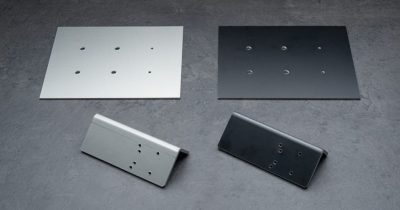What is Black Oxide Coating?
Table of Contents
What Is Black Oxide Coating?
Black oxide coating, also known as metal blackening, oxidizing (oxidation), or black passivating (black passivation), is a chemical process that creates a thin, black oxide layer (Fe3O4—often referred to as “black rust”) on the surface of ferrous metals like iron and steel. This layer offers mild corrosion resistance and a distinctive black finish.
- In the black oxide process, steel parts are submerged in a bath containing about 35–45% sodium hydroxide, along with an oxidizing agent and a catalyst. The temperature is then raised to around 130–150°C (266–302°F). This process oxidizes the surface, resulting in the formation of sodium ferrate. This sodium ferrate is then reduced, creating the Fe3O4 oxide layer on the surface of the parts. Typically, the components are then treated with rust-preventive oil either by dipping the parts in or applying the oil directly. The result is a finish that looks as though it has been dyed black.

Advantages of Black Oxide Coating
This finish offers several benefits and is used in a variety of applications:
Improved Rust Resistance
The coating on the surface of components is durable and stable, helping to prevent the formation of red rust (corrosion that can significantly damage iron surfaces) to a certain degree. Although it may not offer the same level of rust protection as zinc or nickel plating, black oxide coating is recommended for situations where a moderate level of rust resistance is desired without sacrificing aesthetic appeal. Additionally, treating the coating with rust-preventive oil enhances the lubricity of tools and mechanical parts by retaining oil on their surfaces .
Reduced Risk of Peeling
Unlike other surface finishes such as plating or painting, which adhere another layer of material to the surface of the part, black oxide coating chemically alters just the surface of components into a different material. As a result, the new surface does not easily peel off. This makes it a relatively durable surface treatment option.
Minimal Impact on Dimensional Accuracy
Black oxide coating develops slowly, resulting in a thickness of about 1–2μm. Moreover, the coating grows from the outer surface inward. The treatment temperature is relatively low, not exceeding 150°C (302°F), which eliminates concerns about part distortion due to heat. Thus, the dimensions of the components are largely unaffected before and after black oxide coating. This benefit is why this finish is often used for parts that require high precision.
Cost-Effective
Black oxide coating proves economical owing to its inexpensive treatment liquid and the absence of requirements for electrodes or fixtures. Processing multiple components simultaneously also drives down the per-unit cost.
This method’s capability to handle a variety of components concurrently, regardless of their dimensions and forms, while maintaining affordability, establishes black oxide coating as a favored choice for economically managing diverse parts.
Factors to Consider for Black Oxide Coating
While black oxide coating has many advantages, there are some considerations to keep in mind:
Not All Materials Suit Black Oxide Coating
While iron-based materials achieve the best results, certain items such as castings, quenched parts, wire-cut components, and similar materials might produce a black color with a reddish tint rather than a pure black finish. Moreover, alloy steels containing significant amounts of elements such as chromium or nickel may turn gray instead of achieving a black appearance.
Rust Can Form if Oil Film Is Damaged
The Fe3O4 layer provides only minimal resistance to rust. Typically, the surface of this layer is treated with rust-preventive oil to enhance protection. However, if the oil coating is disrupted, external moisture and air can infiltrate the fine pores of the layer, resulting in the formation of red rust. It’s important to recognize that black oxide coating has its constraints in preventing rust.
-
Conclusion
Black oxide coating is a surface treatment method that deposits a ferric oxide (Fe3O4) layer on iron and steel parts. This process results in a sleek, black appearance while preserving the dimensional accuracy of the components. Compared to other treatment methods, it is cost-effective and provides a degree of rust resistance.

What’s meviy?
On-demand, fast sourcing of quality custom mechanical parts is made possible by meviy.
meviy is one of the most reliable on-demand manufacturing platforms in the US that allows you to get instant quotes for your mechanical parts simply by uploading 3D CAD data. No longer need to create 2D drawings just to quote parts. This platform supports sheet metal fabrication and CNC machining such as milling or turning and has saved time for over 160,000 mechanical designers and purchasers worldwide.







